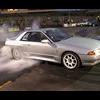Circuit Cornering Theory
Announcements
-
Similar Content
-
Latest Posts
-
Jamie does know his stuff , you might just want to give them a call and ask - here is their FB page - https://www.facebook.com/profile.php/?id=100063506985512 - you will find the number to call them on.
-
Do you think the guys in Penrith are install the E85 Kit?
-
Yes, but 2 things of the top of my head, 1. Legalities of nitrous on a street car. 2. No chop chop. I fully understand that there's much cheaper ways to make power, and whilst a wet 50 shot is fairly cheap to install, bottle fills are expensive, and bottles always need to be refilled, and nitrous also has its own inherent issues with reliability, and tuning, from my experience of others using nitrous, it doesn't take alot to lunch a engine real quick if something goes slightly wrong when spraying, if I wanted a big chunk of additional powers, a spooly boy would make alot more sense, disregarding the additional engineering, supporting mods and other logistical issues of sticking a spooly boy on a car that came naturally aspirated from factory In the end I'm not racing for sheep stations, and I don't really care if people make more power, or are faster than me, or spend less, or more than me, the only thing the car needs to do is drive around and make me smile, which it is doing now Really, I just want a shiny new intake to look at when I'm cleaning the engine bay, and of course, some more induction doorts, and maybe even that 5kw for that elusive 200hp cherry on top that I might get If the FAB9 intake plenum, TB and air filter box thing doesn't eventuate for whatever reason, Plasmaman do one, not as fancy looking, and a fair chunk of more cash is required when including the TB and other bits and pieces that are required to install it, but, it is another option that is available to me if FAB9 one does fall down (but I really, really.....really, want the FAB9 one though) TL;DR. You want what you want
-








Recommended Posts
Create an account or sign in to comment
You need to be a member in order to leave a comment
Create an account
Sign up for a new account in our community. It's easy!
Register a new accountSign in
Already have an account? Sign in here.
Sign In Now